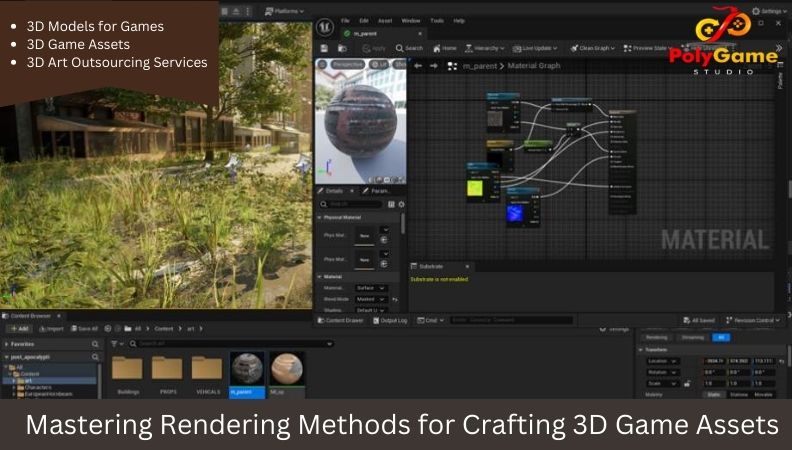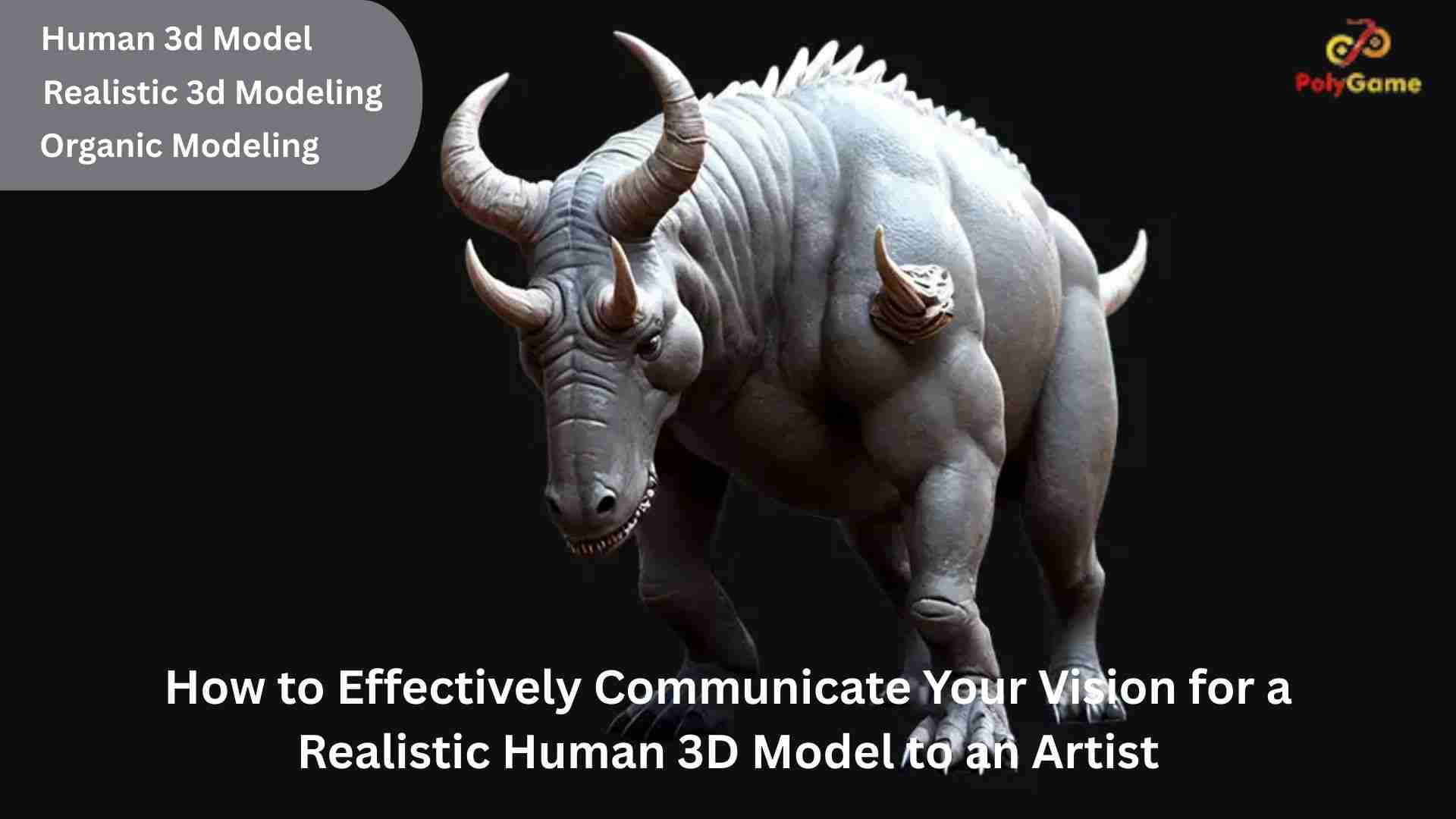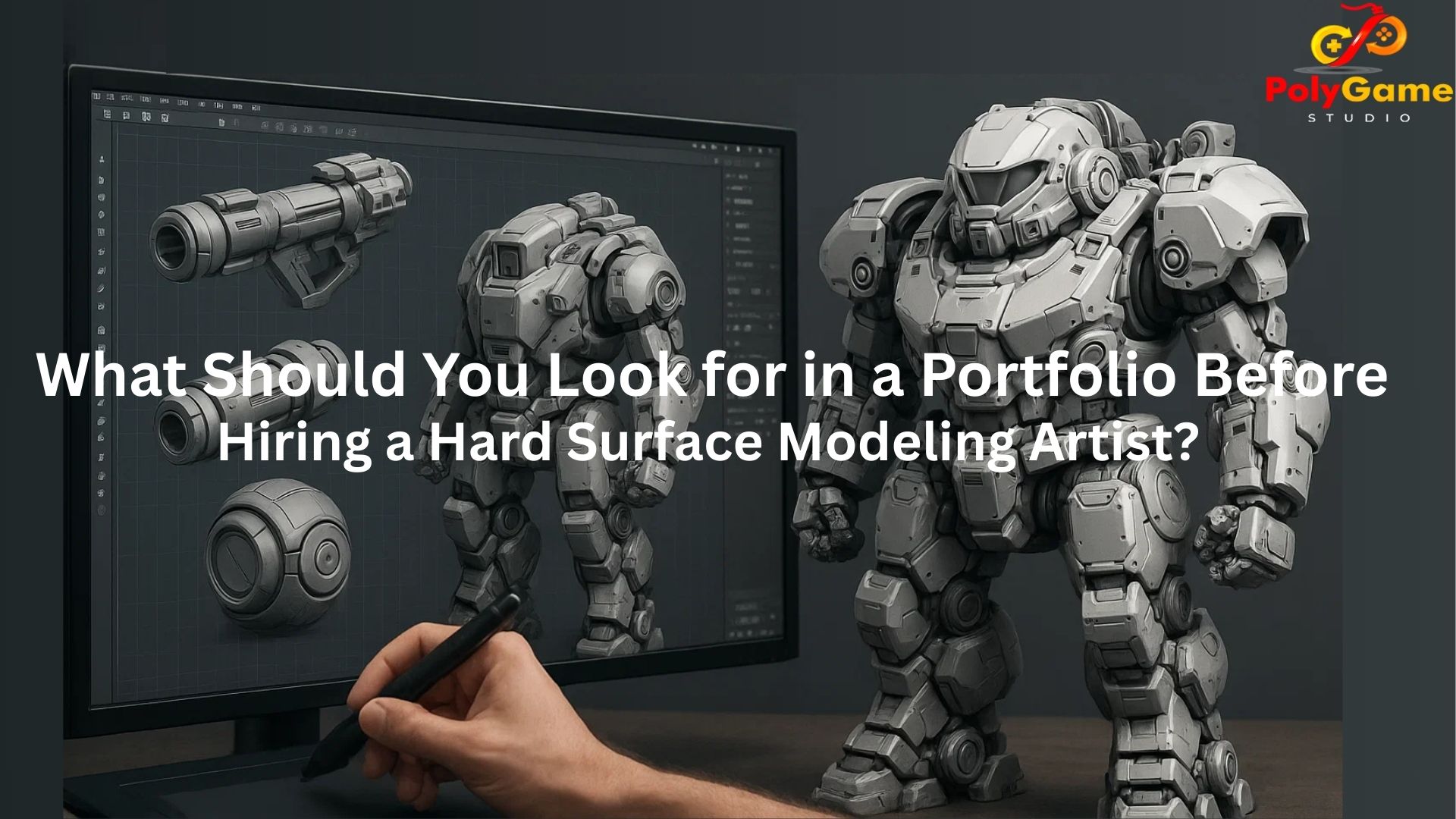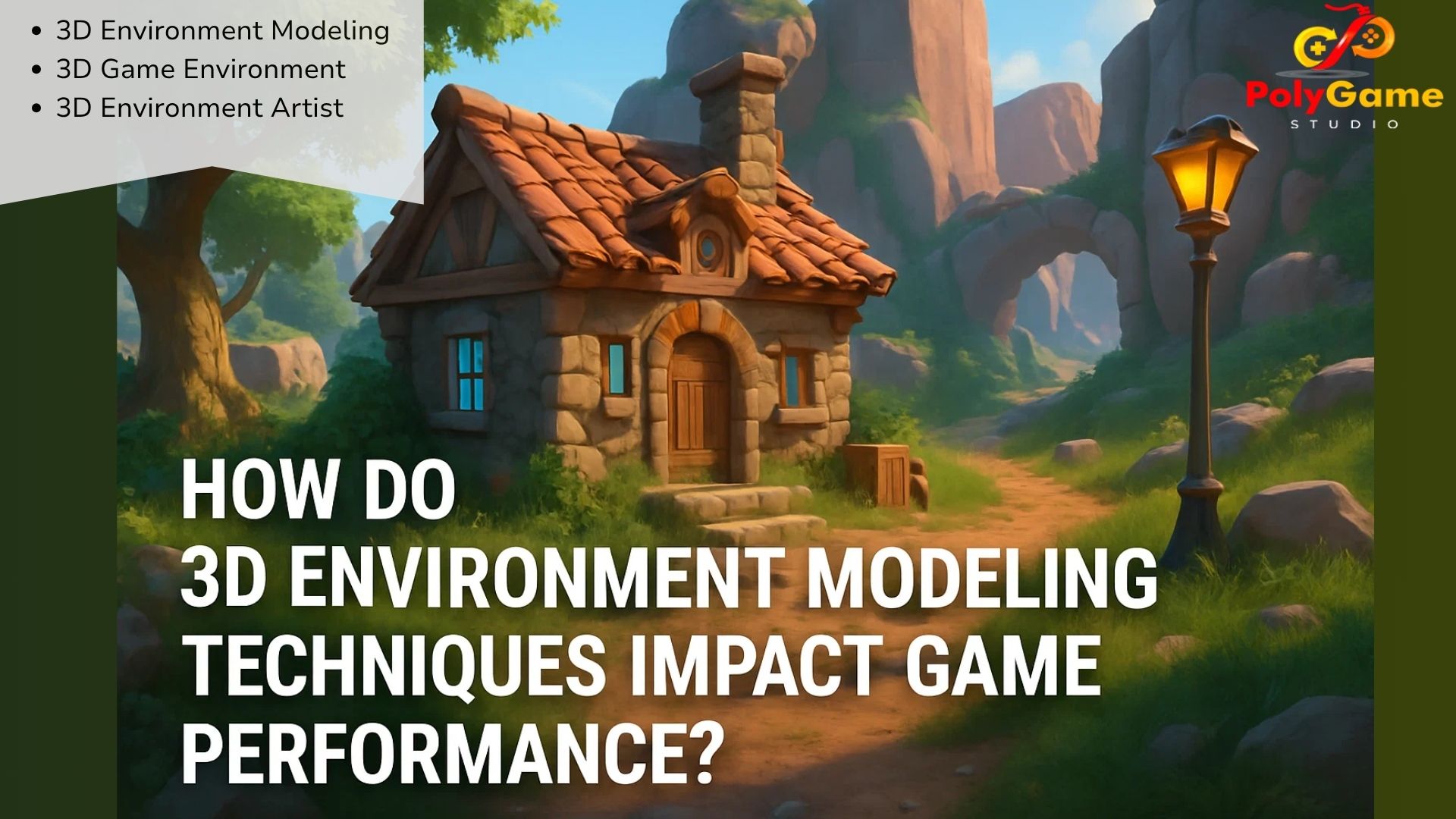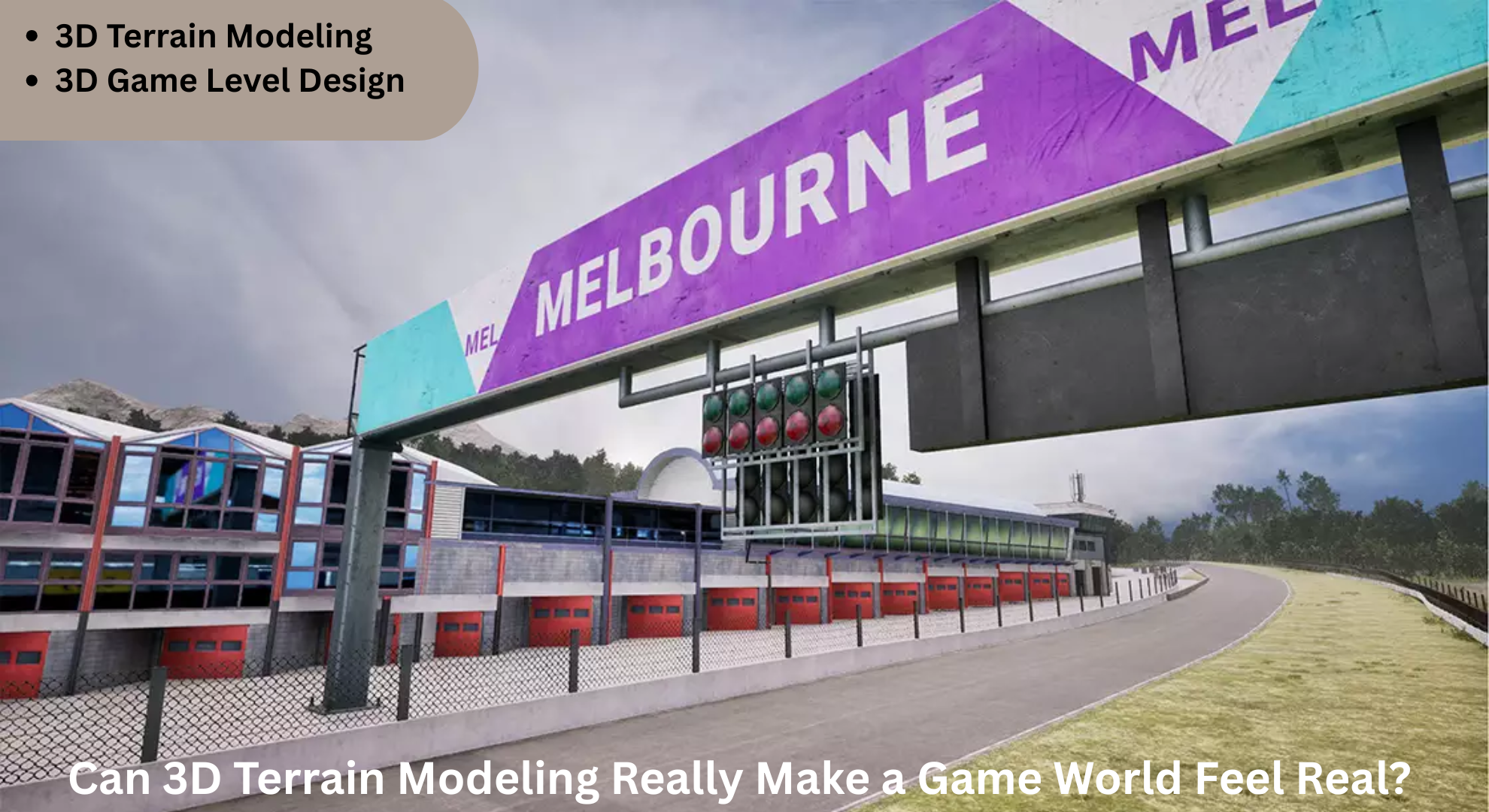Delve into the artistry and innovation that bring 3D game assets to life.
Behind the immersive world and addictive gameplay lies a 3D gaming resource, a masterpiece of gaming art. These digital wonders are the building blocks of virtual worlds, carefully crafted to transport players to a world of wonder and adventure. In this blog, we journey through the world of rendering technology and delve into the artistry and innovation that bring 3D game assets to life.
The Rise of 3D Art Outsourcing Services
In the game development environment, the demand for high-quality assets is rapidly increasing. This surge in demand has led to the emergence of specialized companies known as 3D art outsourcing services providers. These companies serve as role models for creativity and ability, providing game developers with access to vast talent and resources. These companies leverage cutting-edge tools and technology to meet the diverse needs of game developers, from character design to environment modeling and everything in between.
Artistry of 3D Game Assets
At the heart of a virtual world are a variety of 3D game assets, carefully crafted to perfection. From towering fortresses to intricate character models, each object is a testament to the art and technology. Rendering techniques play a key role in bringing these assets to life and transforming polygons into immersive experiences. Let’s take a look at some of the rendering techniques that are shaping the landscape of game art:
Photorealistic Rendering:
Photorealistic rendering mimics the complexity of the real world and provides an alternative to its physical counterpart. The purpose is to create assets that are indistinguishable from each other. Using advanced lighting, texture mapping, and shading techniques, artists can bring game content to life and give it a sense of realism that captivates the senses.
PBR (Physically Based Rendering):
PBR allows artists to achieve breathtaking levels of realism by simulating the physical properties of materials such as metal, wood, and fabric, taking visual fidelity to new levels in games.
Procedural Generation:
By leveraging algorithms and mathematical functions, artists can dynamically generate terrain, vegetation, and other elements, providing endless opportunities for exploration and discovery.
Build a World Brick by Brick
In game development, efficiency is paramount. It’s a modular building block that streamlines the development process and allows developers to easily build vast worlds. By breaking down environments and objects into modular components, artists can quickly assemble and customize game assets, saving time and resources without sacrificing quality.With the use of 3D models for games, developers can swiftly experiment and iterate with various layouts and combinations, from modular buildings to interchangeable character compon
Conclusion
Rendering technology serves as the foundation for creativity and innovation. From the stunning visuals of photorealistic rendering to the efficiency of 3D models for games, each technique offers artists and developers unique opportunities to push the limits of their imagination. As technology continues to advance and artistic vision evolves, the future of game art shines brighter than ever, promising endless possibilities for developers and players alike.
FAQs
- What role does a game art outsourcing company play in the creation of 3D game assets?
3D art outsourcing services provide game developers with high-quality assets ranging from character models to environmental elements. We have skilled artists who use advanced tools and techniques to meet the diverse needs of game development projects, ensuring efficiency and quality throughout the asset creation process.
- What are the benefits of using 3D models for games in game development?
3D models for games offer multiple benefits, including increased efficiency, flexibility, and asset reuse. By dividing environments and objects into modular components, developers can quickly assemble and customize game worlds, saving time and resources. Additionally, modular assets allow developers to quickly iterate and experiment with different layouts and configurations, improving the creative process.
- How do rendering techniques such as PBR improve the visual fidelity of 3D game content?
Physically Based Rendering (PBR) simulates the interaction of light with real-world surfaces and provides more realistic and immersive images. PBR allows you to accurately represent the physical properties of materials such as metal, wood, and fabric, allowing artists to achieve incredible detail and realism.
- What should I consider when outsourcing game art to an outside company?
When outsourcing game art, consider factors such as the company’s reputation, portfolio, and expertise in the specific field of game art. These ensure that both parties are informed about the project requirements, schedule, and deliverables.



